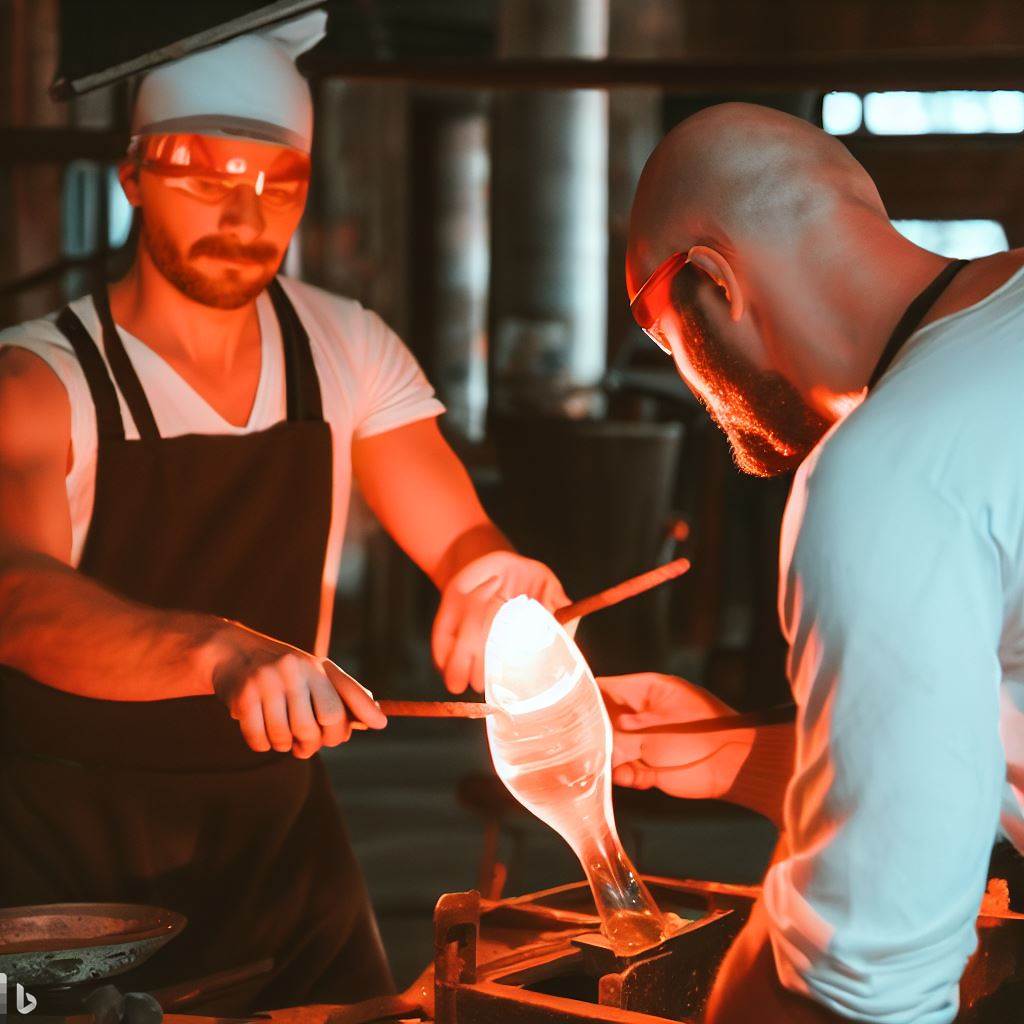Learning at the Bench: The Art of Glassblowing Education
The specialized skills required in glassblowing have historically been passed directly from master to apprentice at the workbench. While classes and media now expand access, hands-on guidance from experienced glassblowers remains the optimal training approach for absorbing generations of refined technique and creative spirit.
Direct Transmission of Knowledge
Unlike textbook learning, glassblowing relies on nuanced firsthand coaching. Experts attentively observe students throughout practice, providing tailored real-time feedback on grip, stance, breathing, and myriad micro details impossible to replicate through passive media consumption alone.
Over weeks of intensive communion at the bench, movements become intuitively absorbed until the apprentice can replicate techniques with precision simply through muscle repetition. This experiential osmosis accelerates skill acquisition beyond isolated practice.
Preserving Heritage and Regional Styles
Beyond fundamentals, direct coaching also preserves the signature stylistic techniques tied to cultural identities. Italian maestros teach Venetian filigrana and Greek glassblowers instruct on Byzantine mosaics to maintain centuries of regional artistry. This continuity of localized knowledge helps traditions survive organically.
Sensitive adaptive guidance adapts methods to individual abilities so students integrate new styles authentically without rigid prescriptiveness. The human touch conveys intangible nuances inexpressible through static tutorials.
Troubleshooting and Critique Cycles
Guided apprenticeship allows rapid refinement through observation, troubleshooting, and critique. Common issues get diagnosed and corrected early before habitualization. Regular feedback provides important reflective assessment from a seasoned outside eye able to identify areas for focused improvement.
This accelerated honing of technique and aesthetic discernment enables students to unlock their creative potential much faster through highly tailored guidance. Objective insights precede breakthroughs.
Individualized Learning
Beyond classroom lessons, one-on-one training allows tailored instruction paced to the learner’s abilities. Stepwise challenges get introduced based on readiness rather than curricular timeframe. Advanced students receive more creative freedom while beginners get more structural reinforcement without collective limitation.
Careful observation also reveals unique strengths and passions within each student to guide personalized progress. Their emerging artistic voices shape collaborative education.
Forging Lasting Mentorship Bonds
At its heart, the intimate master-apprentice approach aims toward holistic individual growth beyond mere skills. Guiding a student through their entire arc – from clumsy debut to integrated artistry – cements profound relational bonds. Through patience and care, glassblowing mentors invest in the overall development of those entrusted to their tutelage.
This interpersonal foundation outlasts temporary class timeframes, undergirding lifelong advancement through ongoing conversation and encouragement. Mentorship becomes an extended family.
Carrying Forward the Creative Lineage
One day in the flowing timeline of glassblowing, the student themselves will mentor the next hungry generation. And thus the living chain of knowledge remains unbroken, transmitting the creative lineage forward through hands clasped and eyecontact at the furnace bench.
